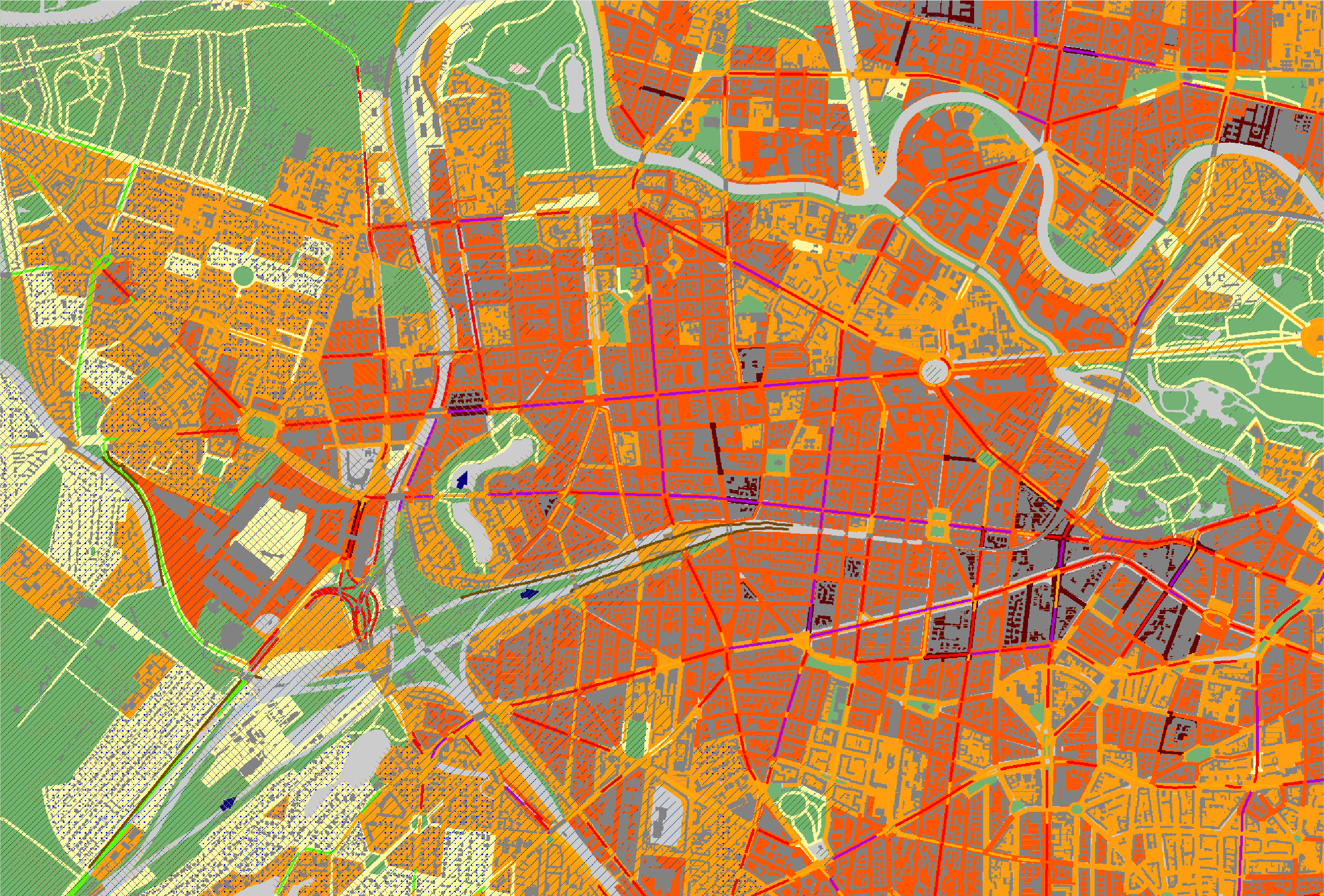PROBLEM HEAT ISLANDS
A fresh & cool forest breeze
The lack of air circulation and comprehensive greening concepts in the city not only leads to fine dust hotspots, but heat also clogs up between buildings on hot days. So-called urban heat islands develop. Even at night, it often does not cool down because the dark buildings and streets store and release the heat. Advancing climate change is adding fuel to the problem. Serious damage to human and natural health is the result. The cardiovascular system in particular suffers from the enormous heat stress in cities. According to the European Environment Agency, heat waves will soon be responsible for 130,000 premature deaths in Europe every year.
We are creating green oases of fresh air that are not only pleasantly cool, but also smell wonderfully like forest.
The main causes
Heat islands are formed in the city through a combination of factors. The absence of greening concepts and adequate air circulation is fundamental to their creation. Advancing climate change is increasingly exacerbating the problem.
Heat islands and fine dust
The one causes the other
The lack of fresh cool air in the city is felt most acutely during hot afternoons. A lack of air circulation and insufficient greening concepts in the city not only lead to fine dust hotspots, but heat also clogs up between buildings in the summer. Notably, problematic heat accumulation occurs predominantly in areas with elevated fine dust concentrations. This poses a heightened risk to vulnerable groups such as children, the elderly, and individuals with pre-existing conditions, who are particularly susceptible to respiratory issues and overheating due to these environmental factors.
Example: Berlin Charlottenburg

The red-colored areas indicate a strong heat island effect in Berlin Charlottenburg.

The dark blue-colored areas indicate high levels of air pollution caused by fine dust (PM2.5) and NO2 in the same area.
Source: Geoportal Berlin
Example: Berlin Charlottenburg

The red-colored areas indicate a strong heat island effect in Berlin Charlottenburg.

The dark blue-colored areas indicate high levels of air pollution caused by fine dust (PM2.5) and NO2 in the same area.
Source: Geoportal Berlin

